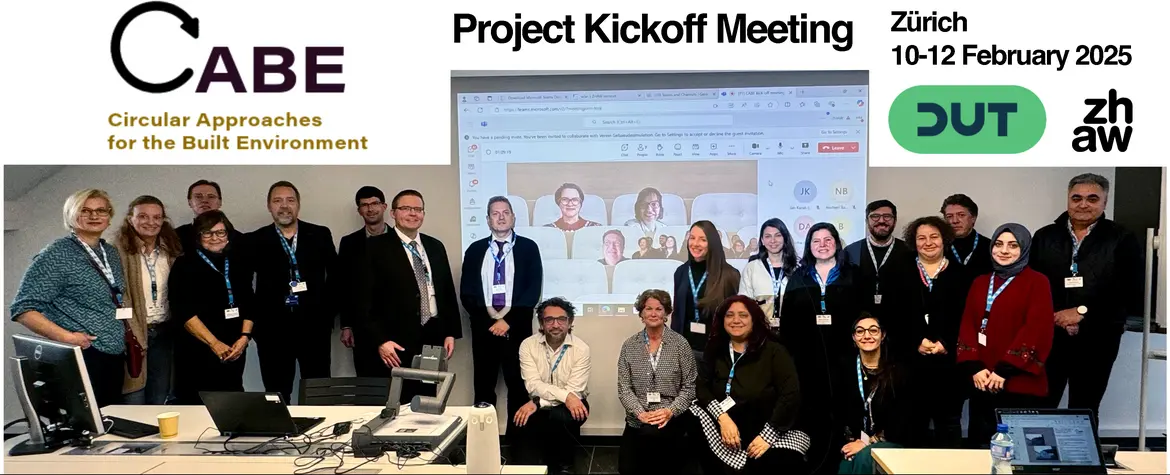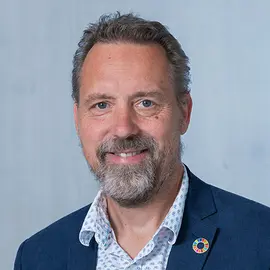Circular Approaches in the Built Environment (CABE)
CABE aims to develop and pilot innovative urban resource sharing infrastructures and circular solutions for the built environment by reusing Construction Demolition Waste (CDW).

Result
Urban innovation 1: A list of criteria that can identify a material as sharable resource.
Urban innovation 2.1: A digital tool that can identify Secondary Material (CDW)
Urban innovation 2.2: A universal urban and regional building material cadastre for different stakeholder groups
Urban innovation 3: Urban sharing framework for implementation in policies, practices, processes, services and products as well as innovation directed at public governance, management and operation.
Urban innovation 4: Case studies of urban innovations in three locations (Switzerland, Slovenia and Turkey) and a demo of CDW management (in Turkey).
Urban Innovation 5: Input to the DUT knowledge hub on urban sharing. It should provide Input to the strategic development of the Transition Pathway for Circular Urban Economy.
Urban Innovation 6: Guidelines will include details about urban sharing of secondary materials on human and environment.
Description
CABE aims to develop and pilot innovative urban resource sharing infrastructures and circular solutions for the built environment by reusing Construction Demolition Waste (CDW). Creating a cadastre approach, tracing mechanisms, disaster waste treatment solutions and a synergetic market for reused materials will contribute to depolluting urban regions, reducing environmental burdens and costs, creating jobs and the security of material supply.
CABE will develop a common understanding to determine shareable secondary resources from the built environment and create an overview of circularity principles, regulations, stakeholders and industrial practices. Digital tools are conceptualized, integrating an urban building material cadastre, a material passport framework and a secondary material information platform as the innovative aspect of the project.
In parallel CABE will be analysing market effects of urban-resource sharing, environmental impacts, and social aspects of equality, diversity and inclusion. To ensure practical relevance, the developed approaches and tools will be piloted in selected demonstration cases dealing with disaster waste, building materials cadastres and an urban circularity centre. Finally, CABE will culminate in scientific publications, best practice guidelines and a roadmap for informed decision making and practical implementation. Transdisciplinary stakeholder involvement is a critical part of the research with inclusion also voices of vulnerable groups.
The main aim of the project is to remove volumes of construction materials that were created with a lot of embodied energy from ending up in landfills. Creating a cadastre approach, tracing mechanism and a synergetic market for reused materials will depollute urban regions while at the same time creating new jobs and growth by valorising these materials.
Key data
Projectlead
Project team
Project partners
Schweizer Gesellschaft für Nachhaltige Immobilienwirtschaft SGNI; Hacettepe University; University of Tartu; Cyprus University of Technology; Wroclaw University of Environmental and Life Sciences; Ankara Metropolitan Municipality; ENSensei Engineering & Consulting LC; Werke Stadt Wädenswil; Slovenian National Building and Civil Engineering Institute; Aristotle University of Thessaloniki; Burgas Free University; Polytechnic University of Timişoara; KYKLOIKODROMIO; Strovolos Municipality; Riga Technical University
Project status
ongoing, started 01/2025
Institute/Centre
Institute of Facility Management (IFM)
Funding partner
Driving Urban Transitions (DUT)
Project budget
2 EUR
